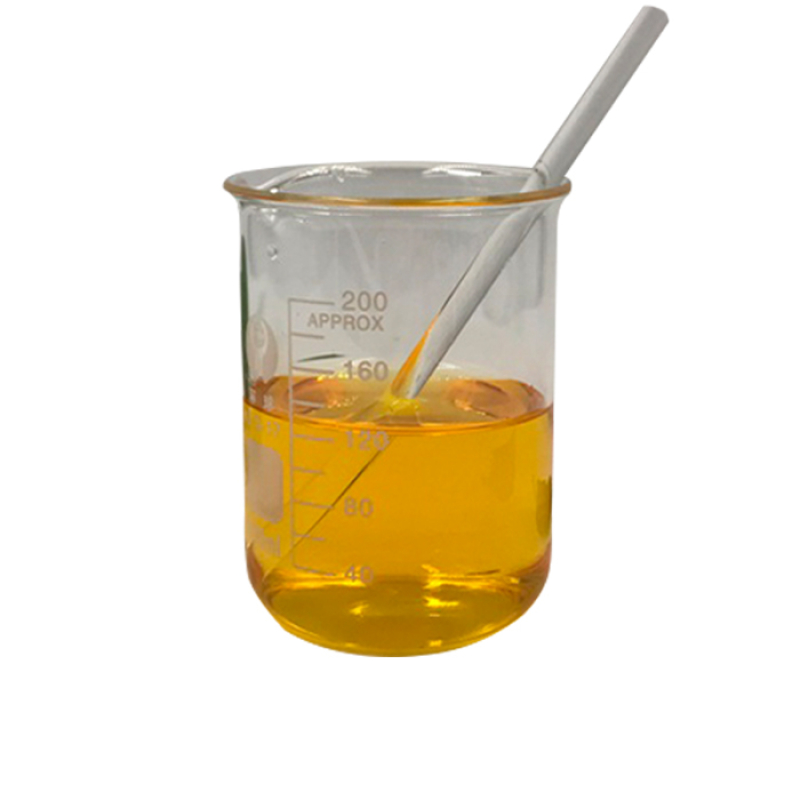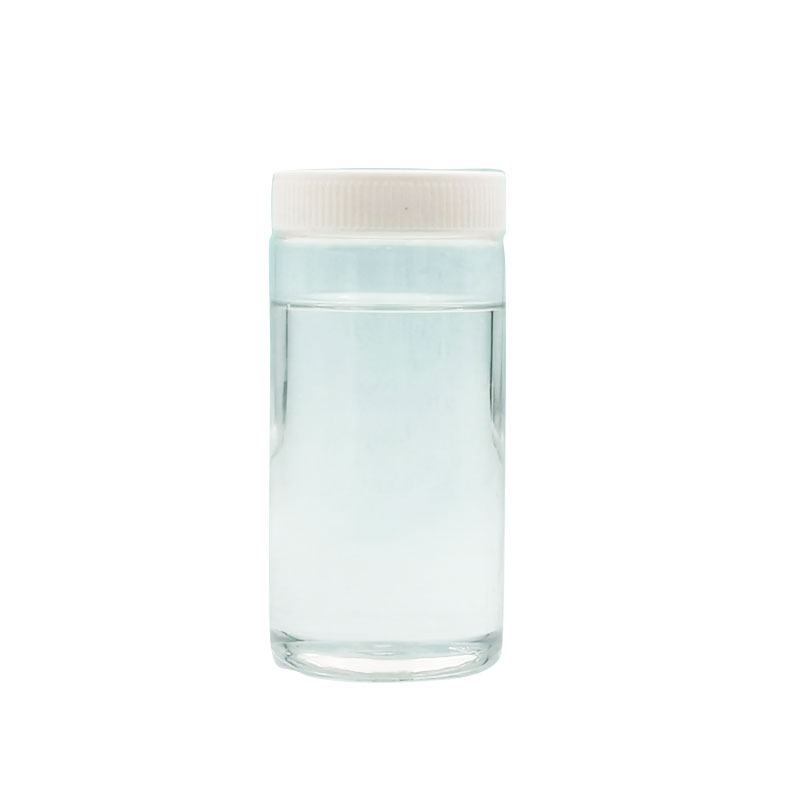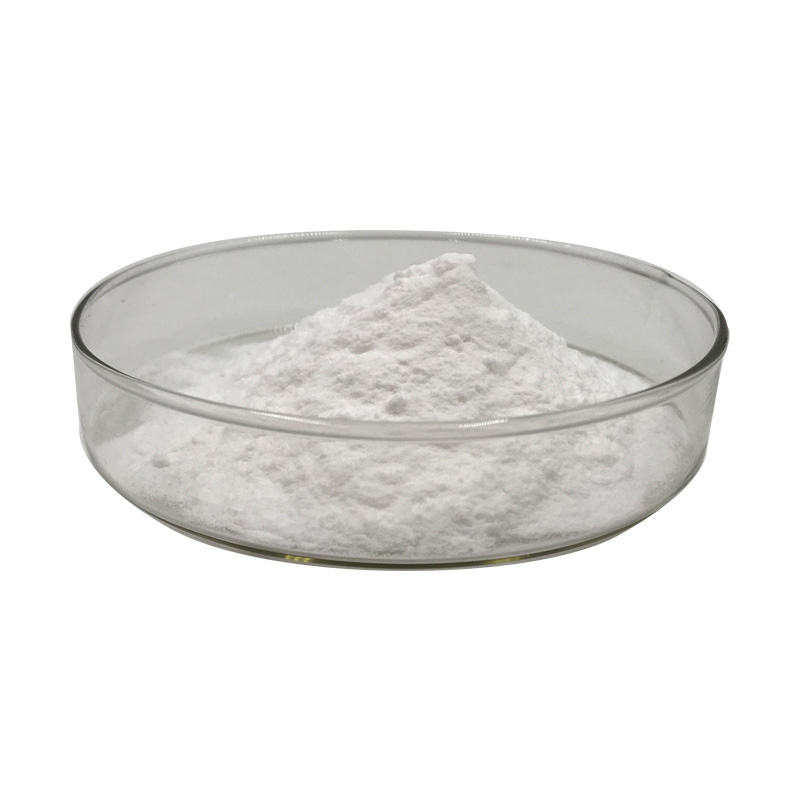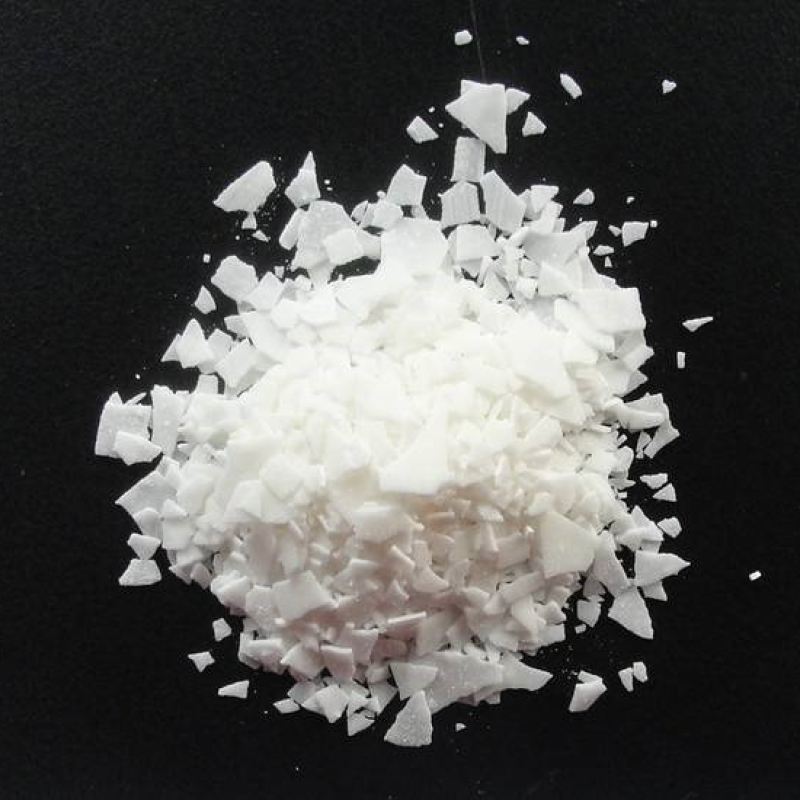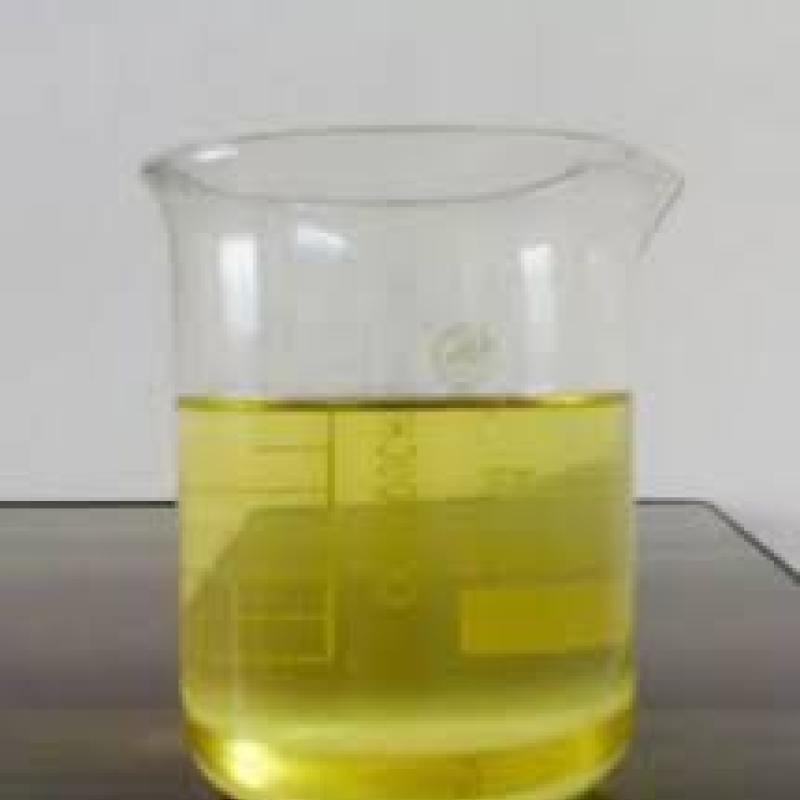Products Description of Chloramine B CAS#127-52-6Chloramine B hydrate is a white crystalline powder.Chloramine B Chemical PropertiesMelting point 190°CBoiling point 189℃[at 101 325 Pa]density 1.484[at 20℃]vapor pressure 0Pa at 20℃storage temp. Keep in dark place,Inert atmosphere,2-8°Csolubility H2O: 0.1 g/mL, clearform solidpka1.88[at 20 ℃]Water Solubility 0.1 g/mLMerck 14,2074BRN 3599287InChIKeyKDNCILYKSYKEFJ-UHFFFAOYSA-NLogP0.14 at 26℃EPA Substance Registry SystemChloramine B (127-52-6) Safety InformationHazard Codes CRisk
Kontaktieren Sie mich jetzt
Products Description of Chloramine B 99% CAS#127-52-6Chloramine B, also known as sodium benzenesulfonyl chloride, is a white crystalline powder. It is explosive when exposed to impact, friction, fire or other ignition sources.
Kontaktieren Sie mich jetzt
Products Description of Piperonyl butoxide 95% CAS#51-03-6Synergyl ether can improve the insecticidal activity of pyrethrins and various pyrethroids, rotenone and carbamate insecticides. It can also improve the insecticidal activity of fenitrothion, dichlorvos, chlordane, triclofenac and atrazine. etc. have a synergistic effect and can improve the stability of pyrethrum extract. When house flies are used as the control object, this product has a higher synergistic effect on permethrin than octachlorodipropyl ether; however, it cannot synergize cypermethrin in knocking down house flies.
Kontaktieren Sie mich jetzt
Products Description of Arabic gum CAS#9000-01-5Gum Arabic is also known as gum Arabic, acacia gum, Akexi gum, Senegal gum, and peach gum. It comes from the exudate collected from the trunk of the Acacia tree. It has been used for 4,000 years. Because it is safe and non-toxic, the dosage is not regulated. It is in the form of yellow to light yellowish brown translucent blocks, or white to light yellow granules and powder. The lighter the color, the better the quality. The fresh one has a smooth surface and a transparent interior. It is odorless and tasteless.
Kontaktieren Sie mich jetzt
Products Description of Sodium polyphosphateCAS#68915-31-1Colorless transparent glass block or flake. Soluble in water, insoluble in organic solvents. Strong hygroscopicity, easily hydrolyzed into orthophosphate in warm water, acid or alkali solution.
Kontaktieren Sie mich jetzt
Products Description of Bilirubin CAS#635-65-4This product is mainly derived from the reduction product of heme in hemoglobin through a series of catabolism after the disintegration of aging red blood cells. It is golden yellow or dark reddish brown monoclinic crystal, odorless and tasteless. Soluble in organic solvents such as benzene, chloroform and carbon disulfide; also soluble in hot mixture of ethanol and chloroform; sodium salt is easily soluble in water, but calcium salt, magnesium salt and barium salt are insoluble in water.
Kontaktieren Sie mich jetzt
Products Description of Shikonin CAS#517-89-5Shikonin (shikonin, shikonin, shikonin) is a class of natural products with naphthoquinone structure extracted from the root of Lithospermum officinale, which has anti-inflammatory, antioxidant, anti-tumor, and wound healing effects. In recent years, the anti-tumor effects of shikonin and its derivatives have been widely studied.Several in vitro and in vivo studies have shown that shikonin and its derivatives can effectively inhibit the occurrence and development of gynecological malignancies such as breast cancer and cervical cancer.
Kontaktieren Sie mich jetzt
Products Description of CARAMEL CAS#8028-89-5Caramel color is one of the food colorings with the longest history of human use. It is also the most widely used and popular food additive currently used by people. It has high color rate and strong coloring ability, reflecting the unique reddish brown color of fermented soy sauce, which is ruddy and bright. It has moderate viscosity, good solubility, high salt tolerance and stable quality.CARAMEL Chemical Propertiesdensity 1.35 g/cm3FEMA 2235 | CARAMEL COLOROdorat 100.00 %.
Kontaktieren Sie mich jetzt
Products Description of DL-Menthol CAS#89-78-1 Menthol is a chemical agent. It is extracted from the leaves and stems of mint. It is a white crystal with a molecular formula of C10H20O. It is the main component of mint and peppermint essential oils. In the world, China and Brazil are the main natural mint producers, and the annual output of mint oil reaches 2000-3000 tons. Menthol and racemic menthol can be used as flavoring agents for toothpaste, perfume, beverages and candies.
Kontaktieren Sie mich jetzt
Products Description of Inositol CAS#87-89-8Myo-inositol, also known as cyclohexanol, hexahydroxycyclohexane, cyclohexitol, myo-inositol, and inositol, is one of the B vitamins. There are 9 isomers due to the different orientations of the hydroxyl groups relative to the ring plane. body, 7 of which are non-optically active and 2 are optically active (left-handed and right-handed).In the natural chemical world, it exists in all biological tissues in free or combined form. It is a common component in animal and plant cells.
Kontaktieren Sie mich jetzt
Products Description of 4-Amino-2-chloropyridineCAS#14432-12-3This product is white crystals, m.p.89~91℃, insoluble in water.4-Amino-2-chloropyridine Chemical PropertiesMelting point 90-94 °C(lit.)Boiling point 153°C 5mmdensity 1.2417 (rough estimate)refractive index 1.5110 (estimate)Fp 153°C/5mmstorage temp. Keep in dark place,Sealed in dry,Room Temperaturesolubility DMSO (Slightly), Methanol (Slightly)pka4.73±0.30(Predicted)form Crystalline Powdercolor Light yellowWater Solubility Slightly soluble in water.BRN 108671InChIKeyBLB
Kontaktieren Sie mich jetzt
Potassium Formate CAS#590-29-4Potassium formate is a useful chemical compound in the production of potassium metal and in the oil and gas industry, often in aqueous solution (alone, or mixed with cesium formate), to yield a high-density, environmentally-friendly brine that can be used a a heat transfer fluid.
Kontaktieren Sie mich jetzt
Sodium formate CAS#141-53-7The main purpose of sodium formate as follows:Sodium formate can be used as chemical analysis reagent, used for determination of arsenic and phosphorus, also used as a disinfectant, mordant and so on.
Kontaktieren Sie mich jetzt
Products Description of Calcium Formate CAS#544-17-2Calcium formate is an organic substance with the molecular formula C2H2O4Ca. It is used as a feed additive and is suitable for all types of animals. It has acidification, anti-mildew, antibacterial and other effects.
Kontaktieren Sie mich jetzt
Products Description of Ethylene dimethacrylate CAS#97-90-5Ethylene glycol dimethacrylate is a diester, meaning there are two alcohol/acid combinations in one organic compound or monomer. Industries often combine this substance with other chemicals to make plastics or rubber.
Kontaktieren Sie mich jetzt
Products Description of POLY(ANTIMONY ETHYLENE GLYCOXIDE) CAS#29736-75-2White crystalline solid, non-toxic and odorless, decomposes in contact with moist air.POLY(ANTIMONY ETHYLENE GLYCOXIDE) Chemical PropertiesMelting point >100°C (dec.)Boiling point 267.3℃[at 101 325 Pa]density 1[at 20℃]Fp >110°CWater Solubility 400ng/L at 20℃Hydrolytic Sensitivity7: reacts slowly with moisture/waterEPA Substance Registry System2,5,7,10,11,14-Hexaoxa-1,6-distibabicyclo[4.4.4]tetradecane (29736-75-2) Safety InformationRisk Statements 20/21/22Safety Statements
Kontaktieren Sie mich jetzt
Ethylene glycol CAS#107-21-1Ethylene glycol is the simplest aliphatic diol, with the chemical properties of alcohol, and can generate ethers, esters, or be oxidized to acids or aldehydes, and can also be condensed to ethers or replaced by halogens. It generally generates diesters when reacting with acyl chlorides or anhydrides.
Kontaktieren Sie mich jetzt
Products Description of Poly(ethylene glycol) dimethacrylateCAS#25852-47-5 Used in food, medical and health gel materials, etc.Poly(ethylene glycol) dimethacrylate Chemical PropertiesBoiling point >200 °C2 mm Hg(lit.)density 1.11 g/mL at 25 °Crefractive index n20/D 1.467Fp >230 °Fstorage temp. 2-8°Csolubility H2O: solubleform Granular Solidcolor White to off-whiteWater Solubility Soluble in water.Sensitive Moisture & Light SensitiveStability:Stable.
Kontaktieren Sie mich jetzt
Ethylene Glycol Diacetate CAS#111-55-7Ethylene Glycol Diacetate, additionally recognized as ethylene glycol diacetate, has a chemical shape containing an ethylene glycol (1,2-ethanol) skeleton, with an acetate crew (-O-C (=O)-CH₃) linked to every of the two hydroxyl positions of ethylene glycol.It is normally a colorless, obvious liquid, from time to time barely yellowish.
Kontaktieren Sie mich jetzt
Ethylene glycol CAS#107-21-1It is colorless obvious viscous liquid with candy style and moisture absorption capability. It is additionally miscible with water, low-grade aliphatic alcohols, glycerol, acetic acid, acetone, ketones, aldehydes, pyridine and comparable coal tar bases.
Kontaktieren Sie mich jetzt
Products Description of Diacetoneacrylamide CAS#2873-97-4Diacetone acrylamide has two reactive groups: N-substituted amide and ketone. It is very easy to copolymerize with other ethylene and monomers, thereby introducing ketocarbonyl groups into polymers. By utilizing the chemical properties of ketocarbonyl groups, polymers can undergo crosslinking and grafting reactions, and are used to prepare various adhesives, thickeners, paper reinforcing agents, crosslinking agents, etc.
Kontaktieren Sie mich jetzt
Products Description of CREMOPHOR (R) A25 CAS#68439-49-6CETETH25 is a nonionic emulsifier obtained by adding natural saturated fatty alcohol and ethylene oxide. CETETH25 (HLB15-17) is an oil-in-water (O/W) emulsifier. When used together with CETETH6, it forms a pair of complementary emulsifiers. The emulsifier pair has a small amount of use and a strong emulsification ability. The prepared emulsion products have high stability and bright appearance. It can tolerate a certain degree of inorganic salts and extreme pH conditions.
Kontaktieren Sie mich jetzt
Products Description of Polyethylene Glycol CAS#25322-68-3Polyethylene glycol is referred to as "PEG". It is a high molecular weight compound formed by intermolecular dehydration condensation of ethylene glycol. Chemical formula HOCH2(CH2OCH2)nCH2OH. Where n is greater than 4. Average molecular weight 200-7000. The number after the commercial polyethylene glycol indicates the average molecular weight. For example, polyethylene glycol-400 means that the average molecular weight of the commercial polyethylene glycol is about 400.Colorless viscous liquid or white solid.
Kontaktieren Sie mich jetzt
Products Description of Melamine CAS#108-78-1Melamine, commonly known as "melamine", "protein essence" and "melamine (Pinyin: mì'àn)", is a triazine nitrogen-containing heterocyclic organic compound, often used as a chemical raw material. It is a white monoclinic crystal, almost odorless, slightly soluble in water (3.1g/L at room temperature), soluble in formaldehyde, acetic acid, hot ethylene glycol, glycerin, pyridine, etc., insoluble in acetone and ethers, harmful to the body, and cannot be used in food processing or food additives.
Kontaktieren Sie mich jetzt




